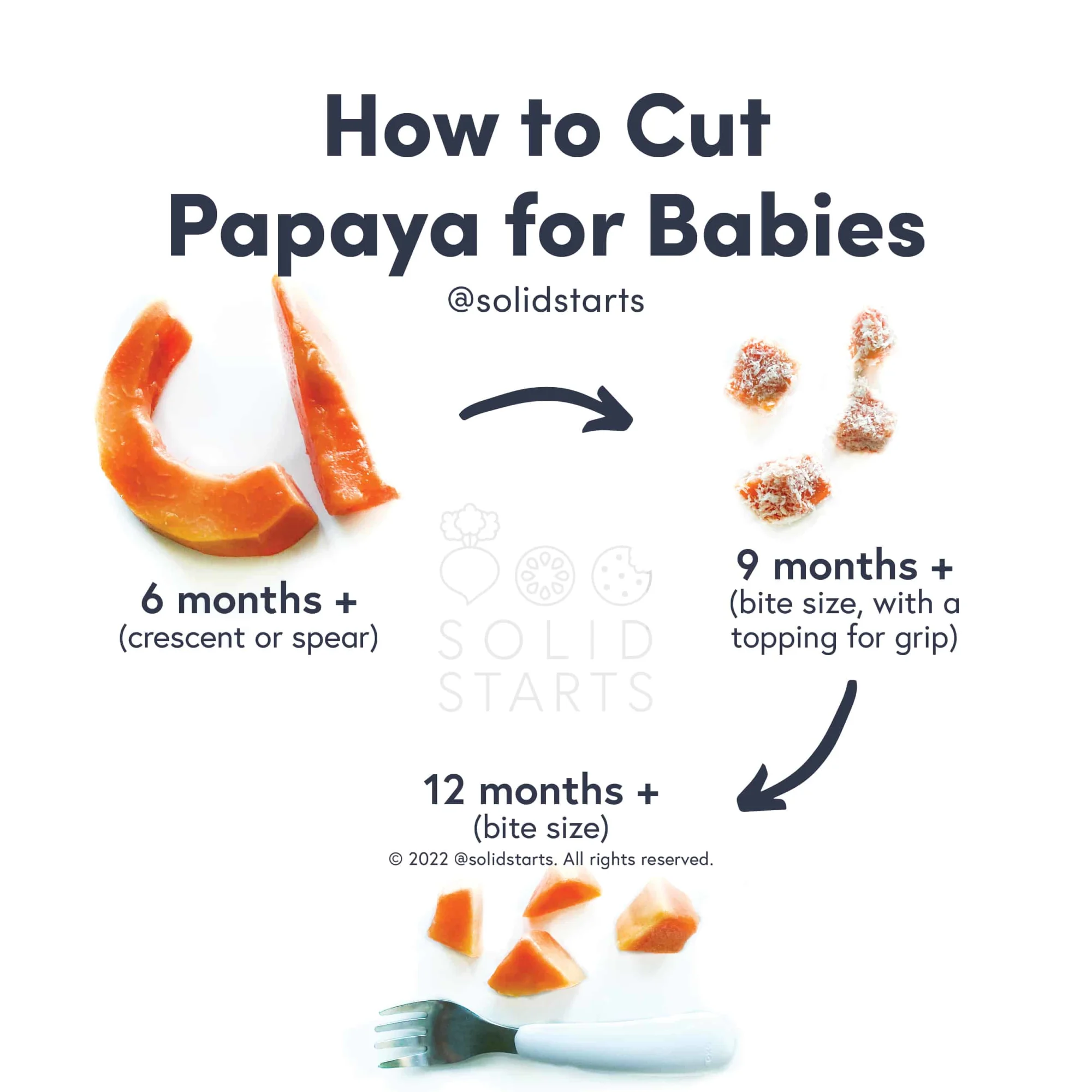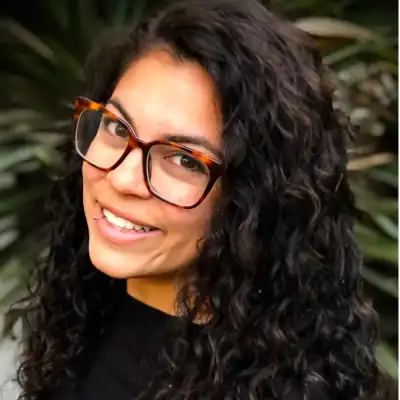Papaya
Fruit
Age Suggestion
6 months
Iron-Rich
No
Common Allergen
No

When can babies have papaya?
Papaya may be introduced as soon as baby is ready to start solids, which is generally around 6 months of age.
Papaya originated in Central America before it was taken by European colonizers to Africa, Asia, and Australia, where it is sometimes called papaw or pawpaw, a name also given to another fruit. Today, papaya thrives wherever skies are sunny, temperatures are consistently warm, and there is plenty of rainfall to plump up the fruit. Papaya can be eaten raw, like a melon when it is ripe, or cooked like squash when it is still young, firm, and green.
Is papaya healthy for babies?
Yes. Ripe papaya is packed with vitamins A and C—essential nutrients to support baby’s eyesight, immune system, and skin. Vitamin C also helps baby absorb iron from plant-based foods, and papaya offers lots of vitamin C. The fruit also offers plenty of B vitamins for energy, vitamin E for stronger cells, and fiber for a healthy gut.
Is papaya a common allergen?
No. Papaya is not a common allergen, although individuals with cashew, pistachio, mango, latex or kiwi allergy may be sensitive to papaya. Some individuals may also be sensitive to papain, an enzyme in the papaya plant.
As you would when introducing any new food, start by offering a small quantity on its own for the first few servings. If there is no adverse reaction, gradually increase the quantity over future meals.
Is papaya a choking hazard for babies?
Yes. While ripe papaya can be soft and easily mashable, underripe or green papaya can be firm and slippery, which are qualities that can increase choking risk. To reduce the risk, prepare and serve papaya in an age-appropriate way as described in the How to Serve section. As always, make sure you create a safe eating environment and stay within an arm’s reach of baby during meals.
Learn the signs of choking and gagging and more about choking first aid in our free guides, Infant Rescue and Toddler Rescue.
How do you serve papaya to babies?
Every baby develops on their own timeline, and the suggestions on how to cut or prepare particular foods are generalizations for a broad audience.
6 months old +:
Offer large wedges or crescent shapes of ripe papaya (skin and seeds removed). The fruit should be soft enough that it mashes readily when gently pressed between thumb and pointer finger. If the fruit is too slippery for baby to hold, sprinkle it with hemp seeds, dry infant cereal, shredded coconut, or finely ground nuts or seeds to add grip and texture. Mashed papaya can also be served on its own for hand scooping or mixed into warm cereal, chia pudding, overnight oats, or yogurt.
9 months old +:
Serve bite-sized pieces of ripe papaya (skin and seeds removed). The fruit should be soft enough that it mashes readily when gently pressed between thumb and pointer finger. If baby struggles to pick up the small, slippery pieces, try coating the fruit in hemp seeds, dry infant cereal, shredded coconut, or finely ground nuts or seeds to add grip and texture, or continue serving ripe papaya in large crescents or wedges.
12 months old +:
Serve bite-sized pieces of ripe, soft papaya to be eaten with a fork or fingers, no modifications needed. When you are introducing a fork, manage your expectations: eating with utensils is a skill that can take well into toddlerhood to get the hang of it. Using utensils accurately can also be exhausting for new eaters, so don’t worry if your toddler goes back and forth between eating with fingers and utensils.


How to prepare papaya for babies 6 months +
A different way to prepare papaya for babies 6 months +
How often should you offer solids? See our sample feeding schedules for babies of every age.
Written by
Expert Tips Delivered to Your Inbox
Sign up for weekly tips, recipes and more!
The content offered on SolidStarts.com is for informational purposes only. Solidstarts is not engaged in rendering professional advice, whether medical or otherwise, to individual users or their children or families. No content on this site, regardless of date, should ever be used as a substitute for direct medical advice from your doctor or your medical or health professional, nutritionist, or expert in pediatric feeding and eating. By accessing the content on SolidStarts.com, you acknowledge and agree that you are accepting the responsibility for your child’s health and well-being. In return for providing you with an array of content “baby-led weaning” information, you waive any claims that you or your child may have as a result of utilizing the content on SolidStarts.com.









